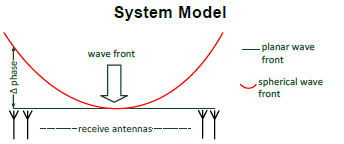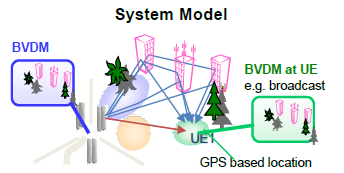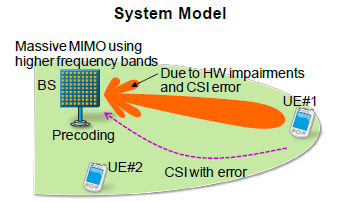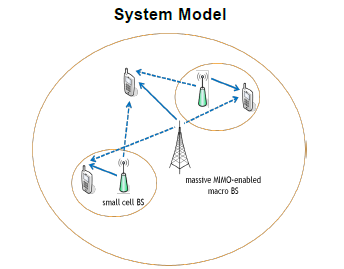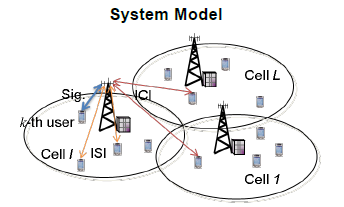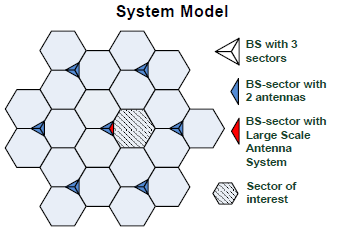|
|
|||||||||||||||||||||||||||||||||||||||||||||
|
There can be many different variations of implementing the Massive MIMO and with different variation we will have different channel model. It would not be possible to post all the possible channel model here. I will just put some typical examples just to let you have chance to get familiar with various notations and mathematical formula. So don't try to memorize it and follow the equation line by line and see if those equations make sense to you. One good way is to try to copy the equation/formula on a sheet of paper by hand. This is what I am doing .. When I am writing this page, I usually write down on a sheet of paper key equations from the document and then type in the comments onto power point and add comments around the equation based on my understanding. Just repeating this process, I found myself gradually getting familiar to basic concepts of the Massive MIMO channel model. (If you are completely new to the concept of channel model itself, I recommend to go through 'Channel Model' page (this is for generic modeling, not for MassiveMIMO. But it will help you to get familiar with basic concepts of channel model and formulating it in mathematical expression) What kind of situation is considered in the channel model ?There are many different situations/factors in radio channel we have to model, but there is no single model that can represents all the different situations. So the practical approach is to define several typical situations and derive different channel model (mathematical model) for each of those typical cases. In reality, it is highly likely that BTS and UE implements algorithms for all of these situations and select one of them depending on the specific situation (this is similar concept in current LTE transmission model (TM) design). In this section, I will introduce the technical components of Massive MIMO channel model described in METIS documents (Ref [2])). I strongly recommend you to read the METIS document first if you are specifically interested in this area. In this section, I will just blindly copy the illulstration from the METIS document, but will try to put comments in my own words. Go through each cases several times whenever you have chance until you get clear picture of each cases and then try to read technical papers and try to associate each of the papers you read to one of the system models introduced here. In most technical papers, they don't usually illustrate the big pictures and jump into the details right away. So if you can correlate one of these big pictures to the papers you read, it will be very helpful for you to understand the contents.
Massive MIMO Channel Model - ExamplesAt first, I tried to put all the examples here but I realized that it is getting longer faster than I thought and it would slow down the page loading. So I decided to create separate pages (notes) for each example and put the link here. The titles of each example is same as the title of the original title of the paper or thesis. If you click the title, it would show up my notes for it. There is no technical importance/implication in terms of the order of the example. It just happened that I read those papers/thesis in that order. 1. Channel Model for Point to Point MIMO1.1) Scaling up MIMO : Opportunities and Challenges with Very Large Arrays 2. Channel Model for Multi User MIMO2.1) Scaling up MIMO : Opportunities and Challenges with Very Large Arrays 3. Channel Model : Massive MIMO and Small Cells3.1) Massive MIMO and Small Cells : Improving Energy Efficiency by Optimal Soft-Cell Coordination 4. Channel Model : FD(Full Dimension) MIMO/3D MIMO4.1) Multi-Layer Precoding for Full-Dimensional Massive MIMO Systems 5. Channel Estimation5.1) MU-MIMO Channel Estimation Reference[2] METIS Deliverable D3.1 Positioning of multi-node/multi-antenna technologies
|
|||||||||||||||||||||||||||||||||||||||||||||


